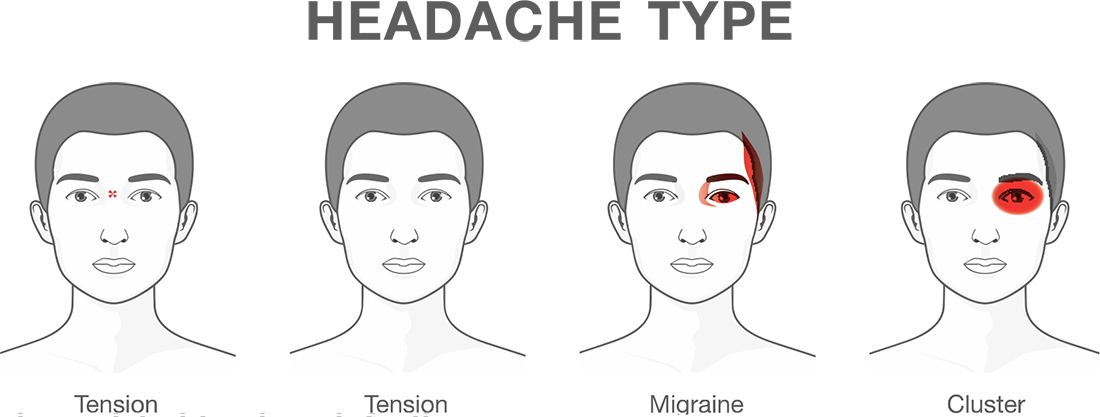Patient information on Migraine – Part I
Who is this information for?
This information is for patients, families and carers with a diagnosis of Migraine
PLEASE NOTE – MIGRAINE DISORDERS ARE NOT TREATED BY MEG CLINICIANS, BUT WHEN DIAGNOSED, APPROPRIATE ON-REFERRAL TO HEADACHE SPECIALISTS WILL BE PROVIDED
What are Headaches?
- Headaches can be quite debilitating, although the vast majority are NOT life-threatening disorders.
- Approximately 90% of headaches are caused by one of four syndromes:
- Migraine Headache(SEE BELOW)
- Between 15-20% of people in Australia experience migraine headaches, making it the second most common type of headache.
- Tension-type Headache
- Pressure or tightness around both sides of the head or neck
- Mild to moderate pain that is steady and doesn’t throb
- Pain is not worsened by activity
- There may be tenderness in the muscles of the head, neck, or shoulders.
- Headache alone –unlike migraine, tension headaches occur without other symptoms such as nausea, vomiting, sensitivity to lights and sounds, and aura.
- Cluster Headache
- Severe headaches that occur repeatedly for weeks to months at a time, followed by periods with no headache.
- Relatively uncommon, with men affected more often than women.
- Begin quickly without warning, reaching a peak within minutes
- Headache is deep, excruciating, continuous and explosive
- Usually short in duration (between 15 mins and 3 hours)
- Can occur up to 8 times a day
- Typically begins around the eye or temple; always on one side
- Associated with eye redness, tear production, a stuffy and runny nose, sweating and pale skin.
- Chronic daily headache
- Generally a combination of the above headache syndromes, when it occurs > 15 days / month, for more than 3months.
- Most patients start of having an occasional migraine or tension-type headache, but the headaches become more frequent over the months to years.
- Some people with frequent headaches also use headache medications too often.

- Migraine Headache(SEE BELOW)
Recurrent headaches related to sinus infections are uncommon.
Many, if not most, people diagnosed with sinus headaches actually have migraine headaches
This information sheet discusses migraine headache. Read more information about Migraine(Part 2).
What are the symptoms of Migraine?
- Preceding ‘Warning’ Symptoms (Migraine Prodrome)
- These symptoms occur in up to 60% of migraine sufferers.
- They occur 24-48 hours prior to the onset of the headache
- Symptoms include: depression, irritability, food cravings, constipation neck stiffness, and increased yawning.
- Pain
- Onset:
- Migraine headache usually begins gradually, intensifies over minutes to hours, resolves gradually
- Duration:
- usually lasts from 4-72 hours
- Rarely lasts for days or weeks
- Severity:
- When mild to moderate -Headache is typically dull, deep and steady.
- Whensevere–headache is throbbing or pulsatile.
- May be very mild or absentin older migraine sufferers
- Aggravating features:
- Migraine headaches are worsened by light, sneezing, straining, constant movement, and physical activity.
- Relieving features:
- Migraine sufferers try to get relief by lying down in a darkened, quiet room.
- Onset:
- ENT-related Symptoms
- ‘Ear’ Symptoms: patients uncommonly may experience earache, sensitivity to sound, a feeling of pressure in the ear, ringing in the ears and even hearing loss
- Balance Symptoms: patients may experience dizziness, imbalance and motion-sickness.These symptoms may even occur in the absence of any headaches.
- Nose Symptoms: Nasal stuffiness and runny nose in 10-20% of people with migraines
- Other Symptoms
- Nausea and vomiting commonly accompanies migraines.
- Sensitivity to light, known as photophobia.
- Rarely: weakness of the face and/or limbs
- Aura
- Symptoms experienced by 20% of migraine sufferers before the headache occurs: called an Aura.
- These may include: flashing lights or bright spots, zigzag lines, changes in vision, numbness or tingling in the fingers of one hand, lips, tongue or lower face.
- You may have one or more of these symptoms
- Auras may also involve other senses and can occasionally cause temporary muscle weakness or changes in speech; these symptoms can be frightening.
- Auras typically last 5-20 mins, and rarely last more than 60 mins.
- The headache occurs soon after the aura stops.
What are some of the common Triggers of dizziness?
Migraines can be triggered by numerous factors, alone or in combination.
| Diet | Stress |
|---|---|
| Alcohol | Let-down periods |
| Chocolate | Times of intense activity |
| Aged Cheese | Loss or change(death, separation, divorce, job change) |
| Monosodium Glutamate (MSG) | Moving |
| Aspartame (Nutrasweet®) | Crisis |
| Caffeine | Changes ofenvironment or habits |
| Nuts | Weather |
| Nitrites, Nitrates | Travel (crossing time zones) |
| Hormones | Seasons |
| Menses | Altitude |
| Ovulation | Schedule changes |
| Hormone replacement (progesterone) | Sleeping patterns |
| Sensory Stimuli | Dieting |
| Strong lights | Skipping meals |
| Flickering lights | Irregular physical activity |
| Odours |
